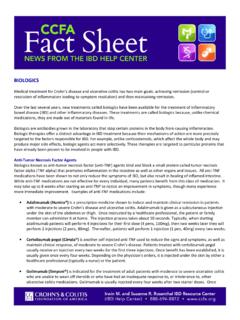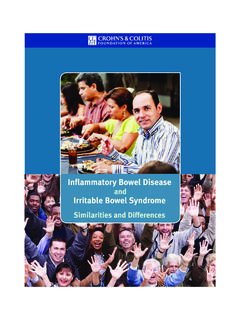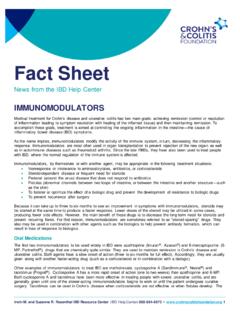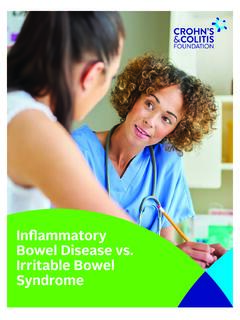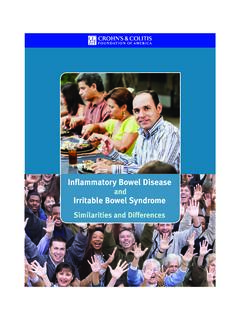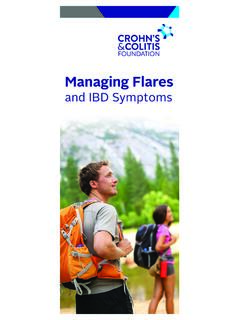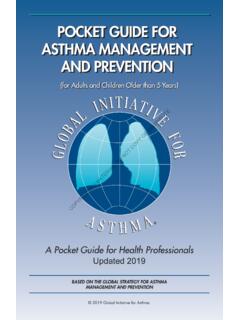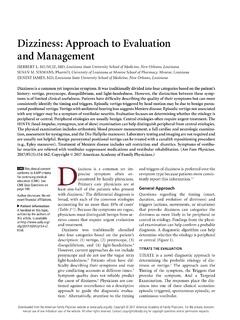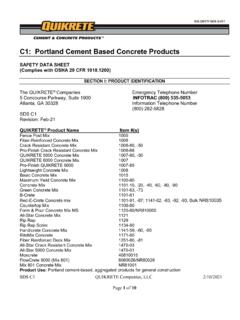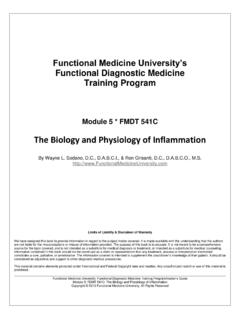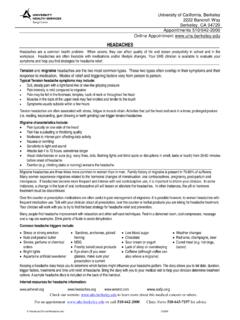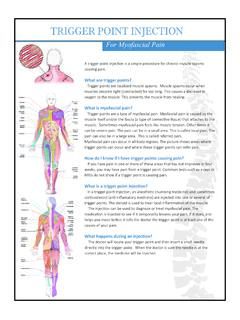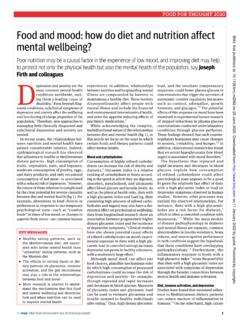Transcription of Living with Crohn’s Disease
1 ALiving with Crohn s Disease1 Understanding your diagnosisYour doctor has just told you that you have Crohn s Disease . Now what? You probably have lots of questions. Some of the most commonly asked questions are: What is Crohn s Disease ? Is there a cure for Crohn s Disease , and what is the outlook (prognosis)? How did I get it? Will I be able to work, travel, or exercise? Should I be on a special diet? What are my treatment options? Will I need surgery? How will Crohn s Disease change my life, both now and in the future?The purpose of this brochure is to provide help-ful answers to these questions, and to walk you through some key points about Crohn s Disease and what you may experience now and in the future. You won t become an expert overnight, but you ll learn more as time goes on. The more informed you are, the better you can manage your Disease and become an active member of your own healthcare s InsideUnderstanding your diagnosis.
2 1 What is Crohn s Disease ? ..2 Will it ever go away? ..3A brief introduction to the gastrointestinal (GI) tract ..3 Who gets Crohn s Disease ? ..4 The genetic connection ..5 What causes Crohn s Disease ? ..6No one knows the exact cause(s) of the Disease ..6 What are the signs and symptoms? ..6 Beyond the intestine ..8 Types of Crohn s Disease ..8 Patterns of Disease ..9 Making the diagnosis ..10 Questions to ask your doctor ..11 Treatment ..13 Managing your symptoms ..16 Other considerations ..17 Surgery ..17 Diet and Nutrition ..18 Complementary and alternative therapies ..21 Stress and emotional factors ..21 General health ..23 Hope for the future ..25 Knowledge and support are power! ..26 Glossary of terms ..30 The Crohn s & Colitis Foundation provides information for educational purposes only, which is current as of the print date. We encourage you to review this educational mate-rial with your healthcare professional as this information should not replace the recommendations and advice of your doctor.
3 The Foundation does not provide medical or other healthcare opinions or services. The inclusion of another organization s resources or referral to another organization does not represent an endorsement of a particular individual, group, company, or and Crohn s Disease , a condition called indeterminate it ever go away?No one knows exactly what causes Crohn s Disease . Also, no one can predict how the Disease once it is diagnosed will affect a particular person. Some people go for years without having any symptoms, while others have more frequent flare-ups, or attacks. However, one thing is certain: Crohn s Disease is a chronic conditions are ongoing and long show that people with Crohn s Disease usually have the same life expectancy as people without Crohn s Disease . It is important to remember that most people who have Crohn s Disease lead full, happy, and productive brief introduction to the gastrointestinal (GI) tractMost of us aren t very familiar with the GI tract, but it s time you get s a quick overview: The GI tract (see figure 1) actually starts at the mouth.
4 It follows a twisting and turning course and ends, many yards later, at the rectum. In between are a number of organs that all play a part in process-ing and transporting food through the first is the esophagus, a narrow tube that connects the mouth to the stomach. Food passes through the stomach and enters the small intestine. This is the section where most of our nutrients are absorbed. The small intestine leads to the colon, or large intestine, which connects to the is Crohn s Disease ?The Disease is named after Dr. Burrill B. Crohn, who published a landmark paper with colleagues Drs. Gordon Oppenheimer and Leon Ginzburg in 1932 that described what is known today as Crohn s s Disease (CD) belongs to a group of conditions known as inflammatory bowel diseases (IBD). Crohn s Disease is a chronic inflammatory condition of the gastrointestinal tract. Symptoms include diarrhea (sometimes bloody), as well as crampy abdominal pain, nausea, fever, loss of appetite, weight loss, fatigue (tired, exhausted feeling), and, at times, rectal bleeding.
5 When you have Crohn s Disease , you will not have the same symptoms all of the time. In fact, sometimes you may have no symptoms at all. When you have no symptoms, this is called clinical remission. When reading about inflammatory bowel diseases, you need to know that Crohn s dis-ease is not the same thing as ulcerative colitis, another type of IBD. The symptoms of these two illnesses are quite similar, but the areas affected in your body are different. Crohn s dis-ease may affect any part of the gastrointestinal (GI) tract, from the mouth to the anus, but ulcerative colitis is limited to the colon also called the large intestine. CD most commonly affects the end of the small bowel (the ileum) and the beginning of the colon. Crohn s Disease can also affect the entire thickness of the bowel wall, while ulcerative colitis only involves the innermost lining of the colon. Finally, in Crohn s Disease , the inflammation of the intestine can skip leaving normal areas in between patches of diseased intestine.
6 This does not occur in ulcerative colitis. In only 10 percent of cases are there overlapping features of both ulcerative 45 While Crohn s Disease can affect those from any ethnic background, it is more common among Caucasians. However, prevalence and incidence rates among Hispanics and Asians have recently ,6 Both Crohn s Disease and ulcerative colitis are diseases found mainly in developed countries, more commonly in urban areas rather than rural ones, and more often in northern cli-mates than southern ones. However, some of these Disease patterns are gradually shifting. For example, the number of cases of IBD is increasing in developing parts of the world, including China, India, and South ,7 The genetic connectionResearchers have discovered that Crohn s dis-ease tends to run in families. In fact, the risk for developing IBD is between percent and 28 percent for first-degree relatives of an affect-ed While genetic background plays a clear role, environmental factors such as diet, smoking, lifestyle, pollutants, and others may impact onset, progression, and relapse of the Disease .
7 As such, while family history has a strong association with increased risk of IBD, it is currently not possible to confidently predict which, if any, family members will develop Crohn s ,10 The principal function of the colon is to absorb excess water and salts from waste material (what s left after food has been digested). It also stores solid waste, converting it to stool, and excretes it through the anus. When inflammation occurs, the primary func-tions are affected, including the absorption of water. As a result, diarrhea can be a very com-mon symptom during flares of Crohn s gets Crohn s Disease ? On average, people are more frequently diagnosed with Crohn s Disease between the ages of 20 and 30, although the Disease can occur at any age and an increased incidence of pediatric Crohn s Disease has beenreported Males and females appear to be approximately GASTROINTESTINAL (GI) TRACTOral Cavity (mouth)Esophagus (throat)LiverStomachLarge Intestine/ColonSmall IntestineRectumAnus12345678 Figure 11234567867large intestine cannot absorb water efficiently.
8 Both of these factors lead to a progressive loosening of the stool in other words, diarrhea. The damaged intestinal lining may begin pro-ducing excess mucus in the stool. Moreover, ulceration in the lining can also cause bleeding, leading to bloody stool. Eventually, that blood loss may lead to a low red blood cell count, called people with Crohn s Disease experience urgent bowel movements as well as crampy abdominal pain. These symptoms vary from person to person and may change over time. Together, these may result in loss of appetite and subsequent weight loss. These symptoms, along with anemia, can also lead to fatigue. Children with Crohn s Disease may fail to develop or grow may range from mild to severe. Because Crohn s Disease is a chronic Disease , patients will go through periods in which the Disease flares up (is active) and causes symp-toms. In between flares, people may experi-ence no symptoms at all.
9 These Disease -free periods (known as remission ) can span months or even years, although symptoms typically do return at some point. inflammation may also cause fistulas to develop. A fistula is an abnormal connection that leads from one loop of intestine to another, or that connects the intestine to the bladder, vagina, or skin. Fistulas occur most commonly around the anal area. If this complication arises, you may notice drainage of mucus, pus, or stool from this complications that may result from chronic inflammation include strictures (narrowing of the intestine from scar tissue) or abscesses. An abscess is a collection of fluid outside of the intestine that contains bacteria, intestinal fluid, and pus (white blood cells).What causes Crohn s Disease ?No one knows the exact cause(s) of the diseaseNothing that you did made you get Crohn s Disease . You didn t catch it from anyone.
10 It wasn t something that you ate or drank that brought the symptoms on. Leading a stressful lifestyle didn t cause it. So, above all, don t blame yourself!What are some of the likely causes? Most experts think there is a multifactorial explanation. This means that it takes a number of factors working in combination to bring about Crohn s Disease . More than 200 genes have now been associ-ated with IBD, though their exact role is still under investigation. It s likely that a person inherits one or more genes that make him or her more susceptible to Crohn s Disease . These genes then lead to an abnormal immune response to some environmental triggers . Scientists have not yet unequivocally identi-fied specific triggers but the bacteria in the intestine, part of our microbiome, are a leading candidate. Other environmental factors (diet, viruses, stress, smoking, etc.) likely play a role as well.
